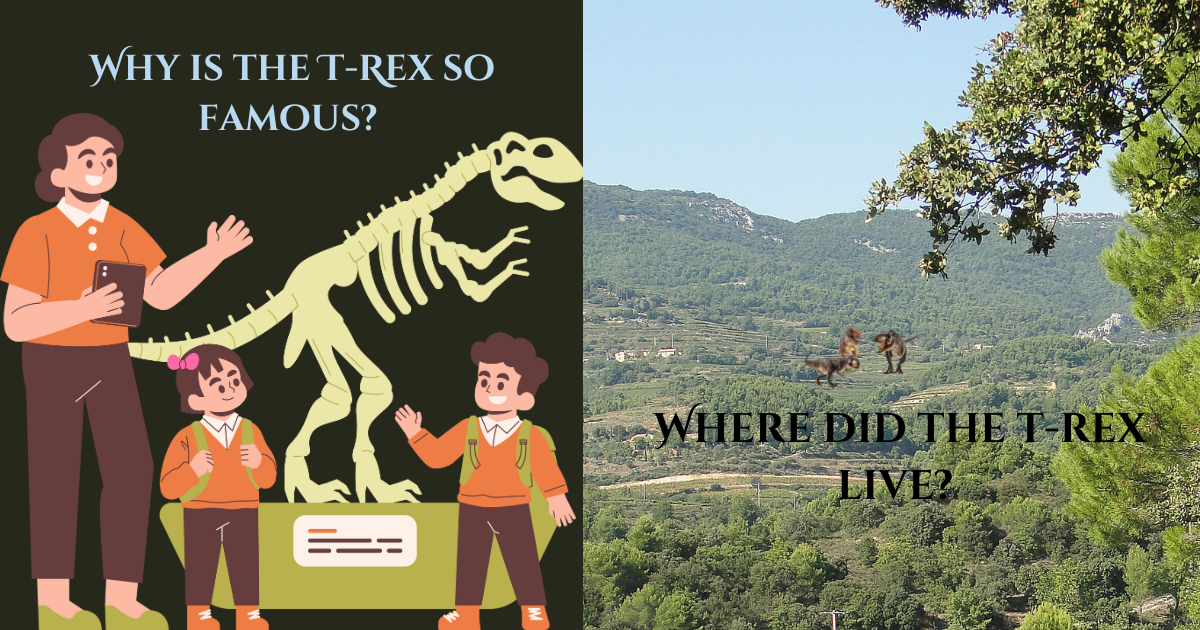Introduction
Why is the T-Rex so famous? Where did the t-rex live? The Tyrannosaurus rex, regularly lovingly shortened as T-Rex, holds a uncommon put in the collective creative ability as one of the most notorious and awe-inspiring dinosaurs to have ever wandered the Soil. But what precisely makes this ancient predator so popular, and where did it call domestic? Let’s dive into the riddles of the T-Rex’s notoriety and its habitat.
Why is the T-Rex so famous?
Imposing Estimate and Control: One of the essential reasons for the T-Rex’s acclaim is its mind blowing estimate and control. Standing up to 20 feet tall and measuring over 40 feet in length, with teeth that may reach up to a foot in length, the T-Rex was a impressive predator of its time.
Popular Culture: The T-Rex has been noticeably included in endless books, motion pictures, and tv appears, encourage cementing its status as a social symbol. From Steven Spielberg’s blockbuster film “Jurassic Stop” to documentaries displaying its life and behavior, the T-Rex has captured the creative impulses of individuals of all ages.
Scientific Importance: As one of the most well-studied dinosaurs, the T-Rex has contributed altogether to our understanding of ancient environments and developmental science. Its fossils have given important bits of knowledge into dinosaur behavior, physiology, and termination events.
Unique Highlights: The T-Rex had a few one of a kind highlights that set it separated from other dinosaurs, counting its expansive head, capable jaws, and minor arms. These unmistakable characteristics have intrigued researchers and laypeople alike for decades.
Where did the T-Rex live?
The T-Rex lived amid the Late Cretaceous period, roughly 68 to 66 million a long time back. Fossil prove proposes that it occupied a wide extend of situations over what is presently North America, including:
Western North America: The T-Rex was overwhelmingly found in what is presently the western Joined together States and Canada, counting locales such as Montana, Wyoming, South Dakota, and Alberta. Fossil disclosures in these regions have given profitable experiences into the T-Rex’s conveyance and environment preferences.
River Valleys and Floodplains: The T-Rex likely favored territories characterized by waterway valleys, floodplains, and lavish vegetation. These situations would have given copious prey in the frame of herbivorous dinosaurs like Triceratops and hadrosaurs.
Diverse Biological systems: The T-Rex coexisted with a assorted cluster of plant and creature species, counting other dinosaurs, warm blooded creatures, and reptiles. Its capacity to adjust to distinctive biological systems talks to its victory as a best predator amid the Late Cretaceous period.
FAQs For Why is the T-Rex so famous? Where did the t-rex live?
Q: How enormous was the T-Rex?
A: The T-Rex was one of the biggest arrive predators to have ever lived, coming to lengths of over 40 feet and standing up to 20 feet tall at the hips.
Q: What did the T-Rex eat?
A: The T-Rex was a carnivorous dinosaur that essentially preyed on expansive herbivores such as Triceratops and hadrosaurs. Its capable jaws and serrated teeth were well-suited for tearing flesh.
Q: Did the T-Rex have any predators?
A: Whereas the T-Rex was one of the best predators of its time, it likely confronted competition from other huge carnivorous dinosaurs such as the Spinosaurus.
Q: When did the T-Rex go extinct?
A: The T-Rex, along with the larger part of non-avian dinosaurs, went terminated around 66 million a long time prior at the conclusion of the Cretaceous period, conceivably due to a combination of natural changes and space rock impact.
Conclusion
The T-Rex’s notoriety can be ascribed to its forcing measure, broad nearness in well known culture, logical noteworthiness, and interesting highlights. In spite of its termination millions of a long time prior, the T-Rex proceeds to fascinate our creative energies and rouse interest with the world of dinosaurs. By understanding where the T-Rex lived and how it connecting with its environment, we pick up profitable experiences into the elements of ancient biological systems and the developmental history of life on Soil.

